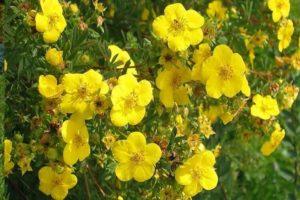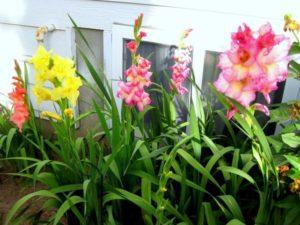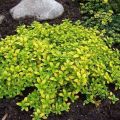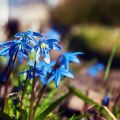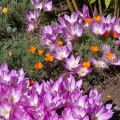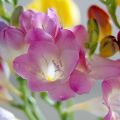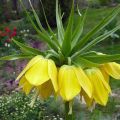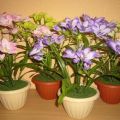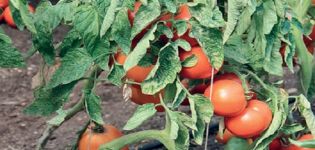Rules for planting and caring for hyacintoids in the open field
Hyacintoides are ideal for planting and nursing outdoors on the ground. It is beautiful in landscape design, in single compositions, as well as in combination with other trees and shrubs. Given that flowering begins early, bright hyacintoid bells will begin to appear in the spring as soon as the sun warms up. Next, we will consider the features of this flower, the nuances of cultivation, varieties and types.
Botanical description of hyacintoids
The plant is included in the perennial group, the average height of the bush is up to half a meter. In nature, there are 2 types of hyacintoids:
- Not described.
- Spanish.
The main difference between hyacintoid species is the shape of the inflorescences. The plant is found in the field, in the forest, in the meadow, as well as in wastelands and wastelands. The most characteristic colors of hyacintoids are blue, lilac, pink and white. This variety will allow you to freely combine the combination of shades when creating landscapes. Propagated by seeds and bulbs.
Varieties and types
The features of the flower include arrow-shaped leaves starting from the rhizome, as well as a single peduncle for the entire plant. Inflorescences of hyacintoids of a characteristic shape ("bells"), up to 2.5 centimeters in diameter, formed in 4-10 pieces.
In one place, hyacintoides can grow up to 6 years. There are about a dozen plant varieties known in the world (up to 40 with hybrids). The most widespread is Spanish hyacintoides. It is grown in Europe, Spain, Portugal, southern France.
Scilla campanulata
Scylla campanulata is unpretentious, grows successfully on lawns, curbs, flower beds. In one brush - up to 50 small (up to 6 millimeters long) flowers. The plant is colored in delicate shades of pink and purple. Hyacintoides combines well with dense foliage of low-growing shrubs, suitable for creating bouquets.
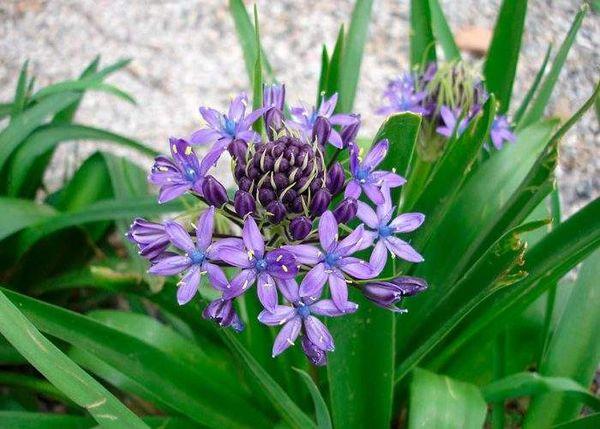
Scilla non-scripta
Scylla non-script is an undescribed hyacintoides that grows from Britain to northwestern Spain. It is widely used as a garden planting, decorative element.
Blue queen
An amazingly beautiful plant, a true royal variety of hyacintoids. The flowers are bright, catchy, snow-white-blue in color. They are definitely suitable for the most expressive, central part of the flower bed.
Excelsior
The Excelsior variety has rich, dark blue bells.Hyacintoides refers to undersized, which does not prevent the use of the advantages of this variety in design, bouquets.
Rose queen
This queen of hyacintoids has petals painted with a delicate mixture of pink and purple flowers. You cannot do without it when forming the landscape of the garden plot.
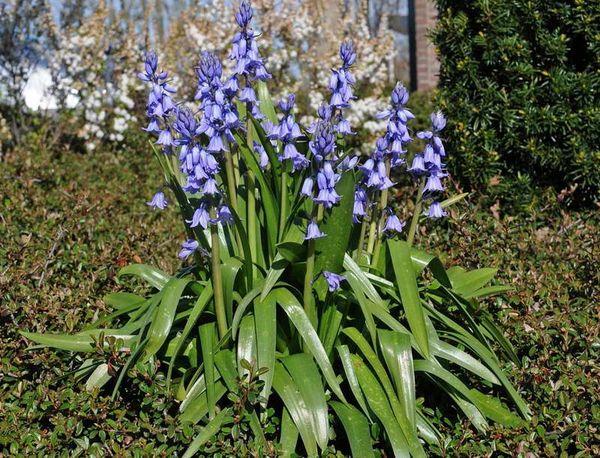
Myosotis
Myosotis is an early, fast flowering species. By nature itself, he is destined to play a leading role in the creation of vibrant compositions.
Blue giant
The blue giant, and this is what the name of this hyacintoid variety sounds like, has prominent bright blue bells. An ideal flower to combine with others in floral collages.
Queen of the pinks
The queen of the flower garden in a delicate robe of rose petals. A beautiful and surprisingly harmonious plant.
White triumphator
A spectacular triumph in snow white. Large, majestic buds adorn the stems of this variety of hyacintoids.

Growing conditions
Gacintoides prefers loamy, lightweight soils. The optimal acidity index should be in the range of 6.1-6.5. In such conditions, the plant blooms best. All varieties need a metered amount of sun, this is a prerequisite. Watering is necessary plentiful, but not excessive.
Hyacintoides is not afraid of rodents, they are scared off by its smell. In natural conditions, plants develop near tall trees that create shade. In the garden, it is better to plant flowers near the fence, under the buildings. Another requirement for the soil is moderate looseness, permeability, always with a sufficient amount of nutrients.
Climate
The climate of the European part of Russia is suitable for Hyacintoides, moderately hot and humid. In more southern, warmer areas, the flower will also feel great. In nature, the plant successfully survives in wastelands, forests and fields. Drought is preferable for him to flooded, watered soil. But the best will be a dosed amount of moisture, combined with lighting.

Soil composition
Flowers grow well on slightly acidic soils. The soil should be drained, with a metered content of fines (sand). Hyacintoides takes root well on sandy loam soils. It is desirable that the aquifers are not located close - this will lead to watering of the site. In addition to the fractional composition, the presence of minerals and nutrients is important. For this, the planting of plants is periodically fed.
Illumination of the place
Hyacintoids are light-sensitive crops, preferring moderately shaded areas. But in the neighborhood with taller plants, trees, they will feel comfortable.
Neighborhood with other cultures
In nature, hyacintoids grows next to flowers, shrubs that are not of their own kind. Moreover, when planted together with lilies of the valley or primroses, the latter mask the faded tops of the bells. The combination of different plants in the garden allows you to create detailed artistic compositions, incredible extravaganzas of colors and colors.
Planting and leaving
More often than others, planting of hyacintoids with bulbs is used. Landing shallow, about 10 to 30 centimeters, no more.
Plants can be placed in partial shade, this will not affect the growth and development of hyacintoids.
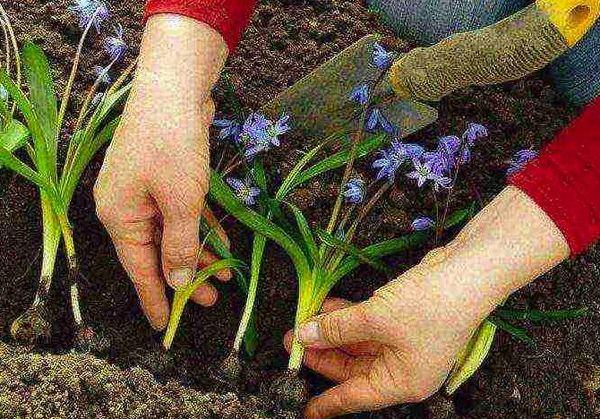
Before planting, the flower beds are digged. To do this, about 7 days before planting, the future site is loosened, large lumps are broken, achieving a uniform soil composition. The next stage is watering the hyacintoids. This is a regular process, providing the plants with sufficient moisture until the first flowers appear.
The main rule when watering hyacintoids is moderation. Drought should not be allowed, while stagnant water is no less dangerous. The plant is fed with organics, mineral complexes.
Timing
Planting dates for hyacintoids are set as follows: September, approximately 20 days. For areas with a mild climate, this parameter can be shifted by a month. The point in timing is to give the bulbs the opportunity to take root before the temperature drops significantly and freezes begin.
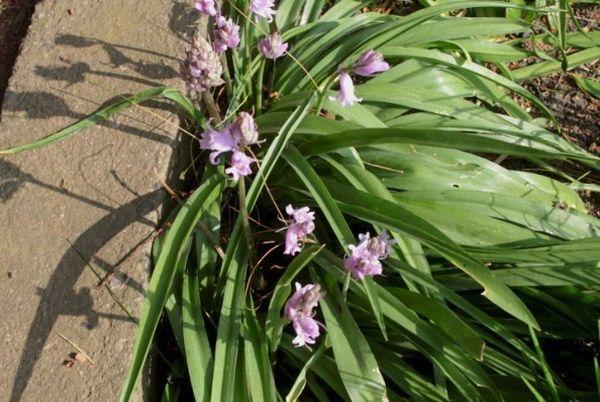
Planting technology
When the site is prepared, the soil has been dug, they begin to plant. But before that, around August, they stock up on planting material - young bulbs. They are obtained by dividing the overgrown hyacintoids rhizome into central (mother) and planting bulbs. The frequency of thinning the plant is 4-5 years, so that the flower does not start to oppress itself, expanding in width.
The bulbs are deepened into the ground by 8-10 centimeters, and then sprinkled with a layer of organic matter (humus). The distance between adjacent bushes is at least 10 centimeters.
Watering and soil care
Hyacintoides are watered, making sure that the soil does not dry out. In addition to loosening and watering, the complex of operations for the care of the site also includes fertilizing. With minerals, the bloom will become lush and regular.
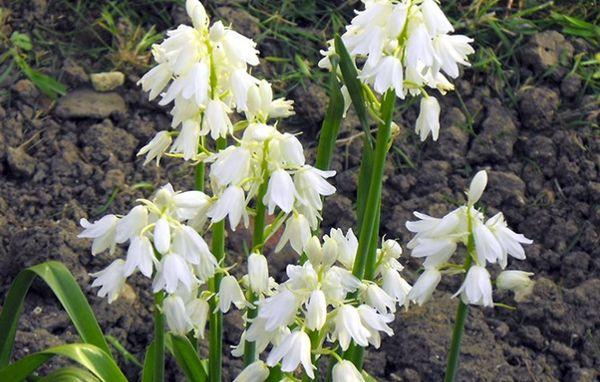
Top dressing
The first portion of fertilizers should enter the soil in spring, at the moment when the awakened plant especially needs "vitamins". Minerals first, then organic additives.
Transfer
Replanting hyacintoides is essential to maintain a rich, vibrant flowering. To do this, once every 4 years, the plant is dug up, if necessary, the "extra" bulbs are separated. When spots of rot appear, changes in color (structure), damaged bulbs are ruthlessly removed.
Diseases and pests of the variety: control and prevention
Any diseases that hyacintoides are susceptible to, dangerous pests for it have not been identified. The only serious danger is overflow and stagnation of fluid in the area. They will lead to the development of rot on the tubers.

Wintering plants
If the flower remains to winter on the ground, then it must be properly prepared. At the end of the growing season, seed pods are removed to prevent over-pollination. Spanish varieties of hyacintoids are more delicate, they are additionally covered. For all others, a thick layer of snow will be enough to keep the plant until spring.
Reproduction methods
Gardeners propagate hyacintoids in two well-known ways: seeds or bulbs. With proper care, both options will provide bright, cheerful bells.
Seeds
The acquired planting material is planted in the ground in the fall. The negative aspects include the need to wait 4-5 years. Sometimes this is the period required for a planted plant in order to bloom.
Bulbs
A win-win. Tubers (purchased or obtained by dividing) are deepened into the ground, sprinkled with humus and left until spring. With the arrival of warmth, young hyacintoids should sprout.
